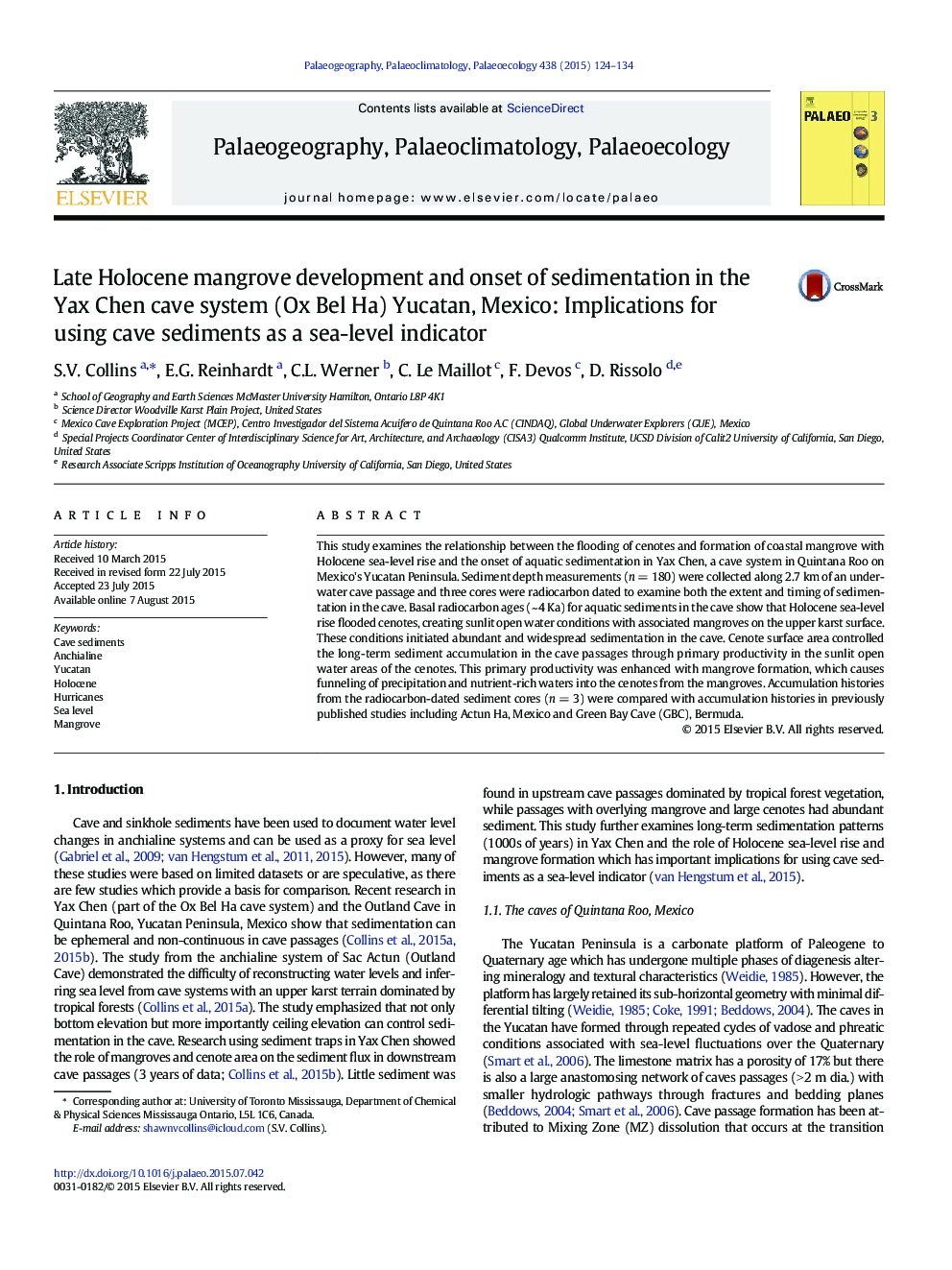| Article ID | Journal | Published Year | Pages | File Type |
|---|---|---|---|---|
| 6349612 | Palaeogeography, Palaeoclimatology, Palaeoecology | 2015 | 11 Pages |
â¢We examine the relationship between Holocene sea-level rise and aquatic sedimentation.â¢It is shown that Holocene sea-level rise flooding cenotes affected sedimentation in the caves.â¢Topography and sea-level rise affected the distribution and amount of sedimentation in the caves.â¢Abundant OM sedimentation in Yax Chen began at ~ 3500 cal yr BP.â¢We demonstrate that anchialine caves are subject to rapid shifts in sedimentation.
This study examines the relationship between the flooding of cenotes and formation of coastal mangrove with Holocene sea-level rise and the onset of aquatic sedimentation in Yax Chen, a cave system in Quintana Roo on Mexico's Yucatan Peninsula. Sediment depth measurements (n = 180) were collected along 2.7 km of an underwater cave passage and three cores were radiocarbon dated to examine both the extent and timing of sedimentation in the cave. Basal radiocarbon ages (~ 4 Ka) for aquatic sediments in the cave show that Holocene sea-level rise flooded cenotes, creating sunlit open water conditions with associated mangroves on the upper karst surface. These conditions initiated abundant and widespread sedimentation in the cave. Cenote surface area controlled the long-term sediment accumulation in the cave passages through primary productivity in the sunlit open water areas of the cenotes. This primary productivity was enhanced with mangrove formation, which causes funneling of precipitation and nutrient-rich waters into the cenotes from the mangroves. Accumulation histories from the radiocarbon-dated sediment cores (n = 3) were compared with accumulation histories in previously published studies including Actun Ha, Mexico and Green Bay Cave (GBC), Bermuda.
